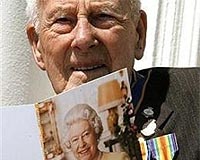| . |  |
. |
Boston, MA (SPX) Jun 10, 2008 In a groundbreaking paper published as a cover story in this week's Nature magazine, Northeastern University physicist Professor Albert-Laszlo Barabasi and his team found that humans can be characterized based on how they move. In the article, titled "Understanding Individual Human Mobility Patterns," the authors discuss how, for the first time, they were able to follow individuals in real-time and discovered that despite the diversity of their travel history, humans follow simple reproducible patterns. Barabasi, along with co-authors Marta C. Gonzalez and Cesar A. Hidalgo, studied the trajectory of 100,000 anonymized cell phone users - randomly selected from more than 6 million users - and tracked them for a six-month period. They found that contrary to what the prevailing Levy flight and random walk models suggest, human trajectories show that while most individuals travel only short distances and a few regularly move over hundreds of miles, they all follow a simple pattern regardless of time and distance, and they have a strong tendency to return to locations they visited before. "We found that human trajectories show a high degree of temporal and spatial regularity, each individual being characterized by a time-independent characteristic travel distance and a significant probability to return to a few highly frequented locations, like home and work" said Albert-Laszlo Barabasi, Distinguished Professor of Physics and Director of the Center for Complex Network Research (CCNR) at Northeastern University. "Our study shows that humans, after only three months of saturated behavior, reach stability in their mobility patterns, and the trajectories become identical," added Marta C. Gonzalez, Ph.D. in Physics and Research Assistant at the CCNR. "People devote their time to a few locations, although spending their remaining time in five to 50 places, visited with diminished regularity." The location of cell phone users was located every time they received or initiated a call or a text message, allowing Barabasi and his team to reconstruct the user's time-resolved trajectory. In order to make sure that the findings were not affected by an irregular call pattern, the researchers also studied the data set that captured the location of 206 cell phone users, recorded every two hours for an entire week. The two data sets showed similar results, the second validating the first. The findings of this research complement the notion that human mobility can be generalized by the Levy flight statistics, as suggested by a 2006 study that found that bank note dispersal is a proxy for human movement. That study analyzed the dispersal of about half-a-million dollar bills in the U.S. and concluded that human travel on geographical scales is an ambivalent and effectively superdiffusive process. By using a different methodology, Barabasi's group was able to find evidence to complement those findings. "Contrary to bank notes, mobile phones are carried by the same individual during his/her daily routine, offering the best proxy to capture individual human trajectories, said Cesar A. Hidalgo, Ph.D. and Research Assistant at the CCNR. "Also, unlike dollar bills that always follow the trajectory of the current owner and diffuse, humans display significant regularity and do not diffuse." "The inherent similarity in travel patterns of individuals could impact all phenomena driven by human mobility, from epidemic prevention to emergency response, urban planning, traffic forecasting and agent-based modeling," added Barabasi. Community Email This Article Comment On This Article Share This Article With Planet Earth
Related Links Northeastern University All About Human Beings and How We Got To Be Here
 London (AFP) June 6, 2008
London (AFP) June 6, 2008Europe's oldest man, World War I veteran Henry Allingham, was marking his 112th birthday on Friday by attending a flypast of fighter aircraft from the Battle of Britain. |
|
| The content herein, unless otherwise known to be public domain, are Copyright 1995-2007 - SpaceDaily.AFP and UPI Wire Stories are copyright Agence France-Presse and United Press International. ESA Portal Reports are copyright European Space Agency. All NASA sourced material is public domain. Additional copyrights may apply in whole or part to other bona fide parties. Advertising does not imply endorsement,agreement or approval of any opinions, statements or information provided by SpaceDaily on any Web page published or hosted by SpaceDaily. Privacy Statement |